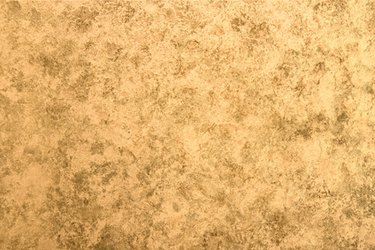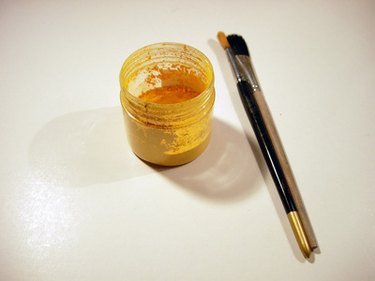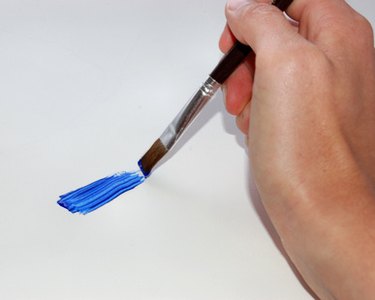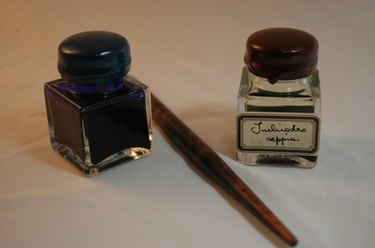Things You'll Need
Old oil paints
Turpentine
Newspaper
Glass or ceramic bowl
Scissors
Fork
Palette knife
Scrap paper
Paintbrush
Glass jars with secure lids
Masking tape
Permanent marker

Beautiful hand-marbleized paper is often used in bookmaking or other paper crafts. The marbling pigments sold by most arts-and-crafts suppliers can be quite expensive and are not always readily available. Instead, follow these instructions to make your own inks with old oil paints, that can be used to create elegant marbleized papers.
Step 1

Collect old oil paints for the ink. Almost empty paint tubes, small pieces of oil sticks and dried globules of paint on palettes work very well.
Video of the Day
Step 2
Select a well-ventilated area with a sturdy, level table or bench for your workspace. A studio with a large work surface is ideal; however, a carport and folding table are more than adequate. Cover all exposed surfaces with newspaper.
Step 3
Wearing surgical gloves, prepare the oil pigments in a ceramic bowl. Use scissors to cut the ends off old paint tubes and to remove the labels from oil sticks. Use a fork to grind the paint solids into a thick paste. Mix colors to achieve the desired hue.
Step 4

Add one to two capfuls of turpentine to the oil paste. With the palette knife, stir the mixture until it is smooth and lump free. Add more turpentine to dissolve stubborn bits of pigment.
Step 5

Paint a small area of the scrap paper to test the ink's consistency. This should produce a semitransparent color. If the ink is too opaque, add more turpentine to the mixture. Add more pigment to create a richer color.
Step 6

Carefully transfer the mixture to a glass jar with a well-fitting lid. Use masking tape and a fine-tipped permanent marker to label and date the container. These inks have a virtually unlimited shelf life.
Tip
Tape a piece of the color test paper to the top of the ink jar for a quick reference. For a cheap alternative to oil paint, try using a cattle marker. Most feed stores keep several colors in stock. Linseed oil or mineral spirits are an alternative to turpentine.
Warning
Always handle turpentine with care. It is flammable and produces hazardous fumes. To avoid muddy colors, clean all supplies with turpentine before mixing a new color of ink.
Video of the Day